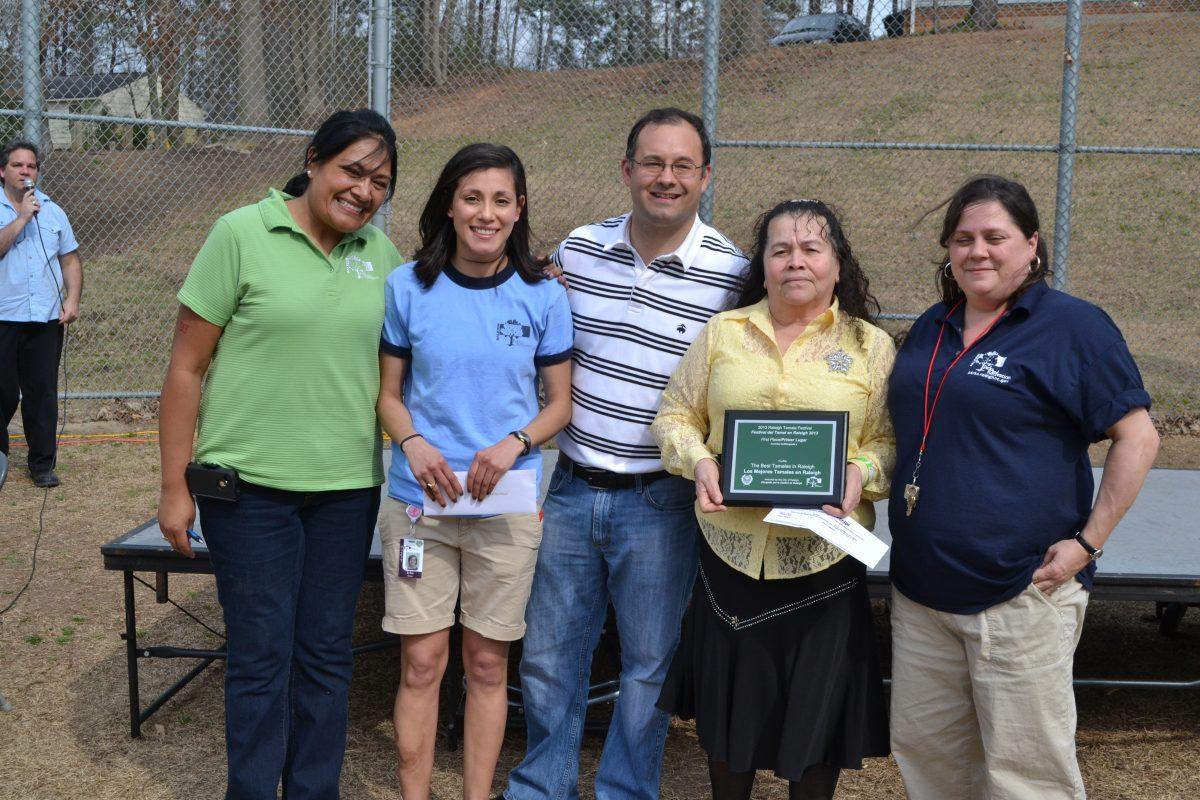
Winner Rosalva Verdín, who won for her tamales made with fillings of pineapple, coconut, and raisin.
It was like an early Christmas Eve or a family reunion for Raleigh’s Latino community at Peach Road Park on Saturday.
Nearly 600 people from Raleigh’s Latino community attended the 5th annual Festival del Tamal to enjoy a cultural delicacy that many Latino households are accustomed to having at large family gatherings—especially around Christmas Eve. Attendees also had the opportunity to learn about various resources available to the Latino community in Raleigh.
Every year since 2009 the Raleigh has held the Raleigh Tamale Festival on the third Saturday of March. The festival allows contestants to enter into a tamale competition, provided they bring at least 25 of their homemade tamales with them to the event and have a container to keep them warm, among other requirements.
For the second year in a row, masa company Maseca—the main sponsor for the Festival del Tamal—offered cash prizes to the top tamale makers. The first place winner won $600, second place won $300, third place $200, and fourth through sixth each won $100. A panel of 12 judges representing members from the Mexican Consulate, Raleigh Fire Department, and the Spanish service group NCSU VOLAR, graded the tamales on the basis of flavor, texture, appearance, and presentation.
For some of the judges, this was a new experience.
“I’d had tamales before, but mostly from the store. I wanted to see what real ones would be like, some authentic ones,” said William Smith, a member from Raleigh Fire Department who served as a judge.
“[My favorite] was a chicken tamale; I’m not sure what all they had in it…some chicken and some kind of peppers. It had a very good flavor to it. It wasn’t overly spicy, but still had a kick to it, and it wasn’t as bland as some of them,” said Smith.
This year’s winner was Rosalva Verdín, a Mexican. She won for her tamale made of pineapple, coconut, and raisin.
This year, 14 people entered in the contest. Tamales ranged from the traditional fillings of chicken, beef, and pork, to sweeter ones like pineapple and raisin, and to more exotic fillings like shrimp—a filling commonly used in tamales from the Sinaloa state of Mexico. Tamales from several countries were presented, and some entries featured tamales wrapped in corn husks while others entered tamales wrapped in banana leaves.
In total, approximately 400 tamales, each cut into several bite-size pieces, were served at the event. Each attendee was given a wristband which allowed them access to sample the various tamales that the contestants had prepared.
Besides the tamale competition, the festival also featured cultural dance performances from an Azteca dance group and musical performances from a children’s mariachi band called Mariachi Nueva Esperanza. Several attendees at the event joined in when a team of Zumba instructors led the crowd in a series of dance routines set to common Spanish songs from artists like Lucenzo and Don Omar.
Food and entertainment, however, was not the only focus of the event. Many programs and businesses from the Raleigh Latino community also provided information about the services and programs that they offer for not only Latinos, but for the city of Raleigh in general.
La Noticia, a Spanish-language newspaper in our area, featured a spin wheel at their booth with a winning prize of two tickets to see the Carolina Railhawks play Las Pumas from the UNAM (National Autonomous University of Mexico) on March 19.
Other booths included appearances from 101.1FM La Ley and El Pueblo, Inc., as well as information on Triangle Transit and ESL Programs offered by the City of Raleigh Parks and Recreation. Maseca also offered various free items, including calendars with Hispanic recipes and food-related phrases and coloring books about Mexico’s independence.
“Oh, I think they’re very important [cultural events like this]. They give [Latinos] a chance to get together and celebrate what their proud of, and their heritage. And it also gives Americans like myself a chance to see where they come from. It brings the community more together,” said Smith.